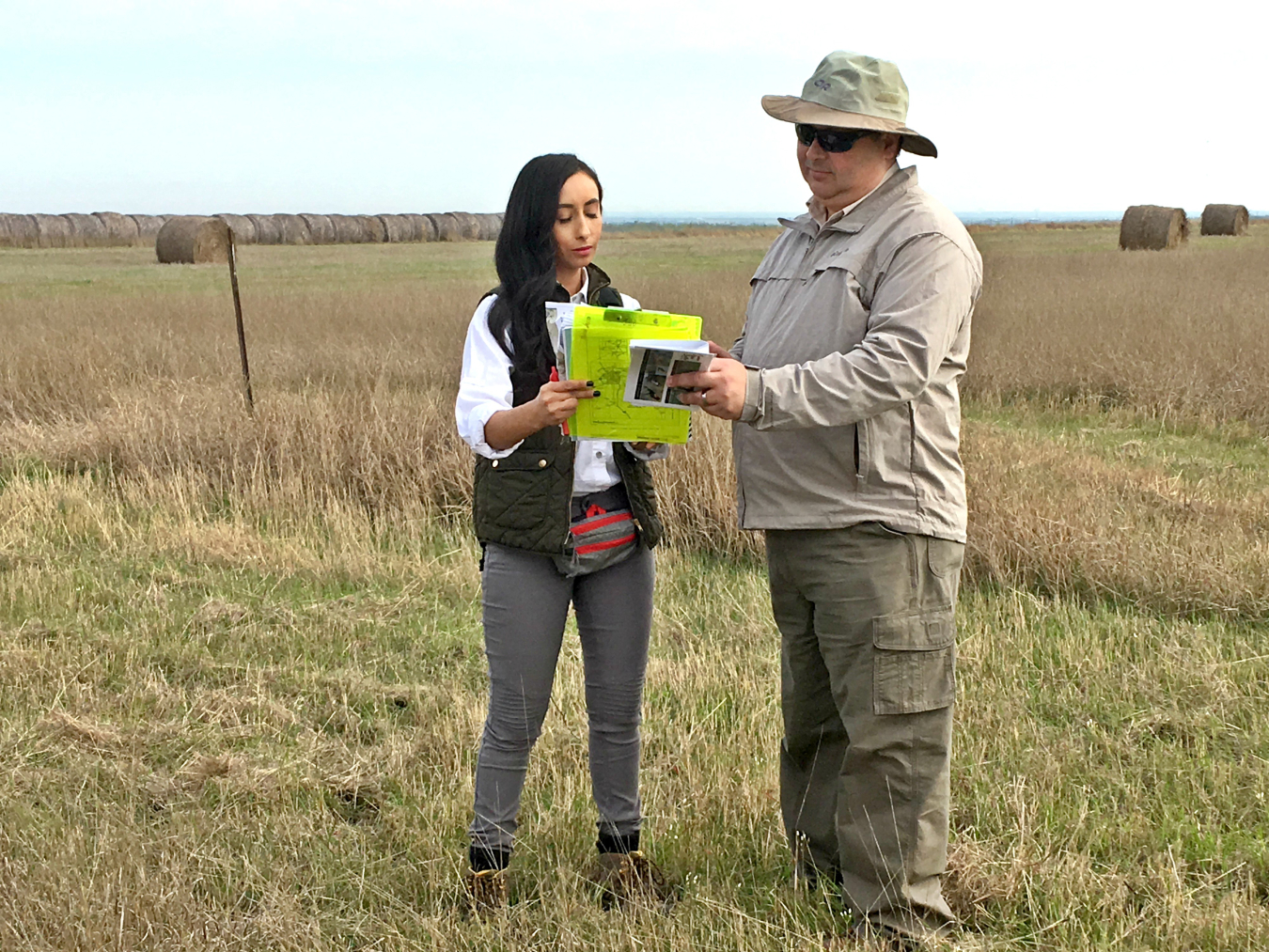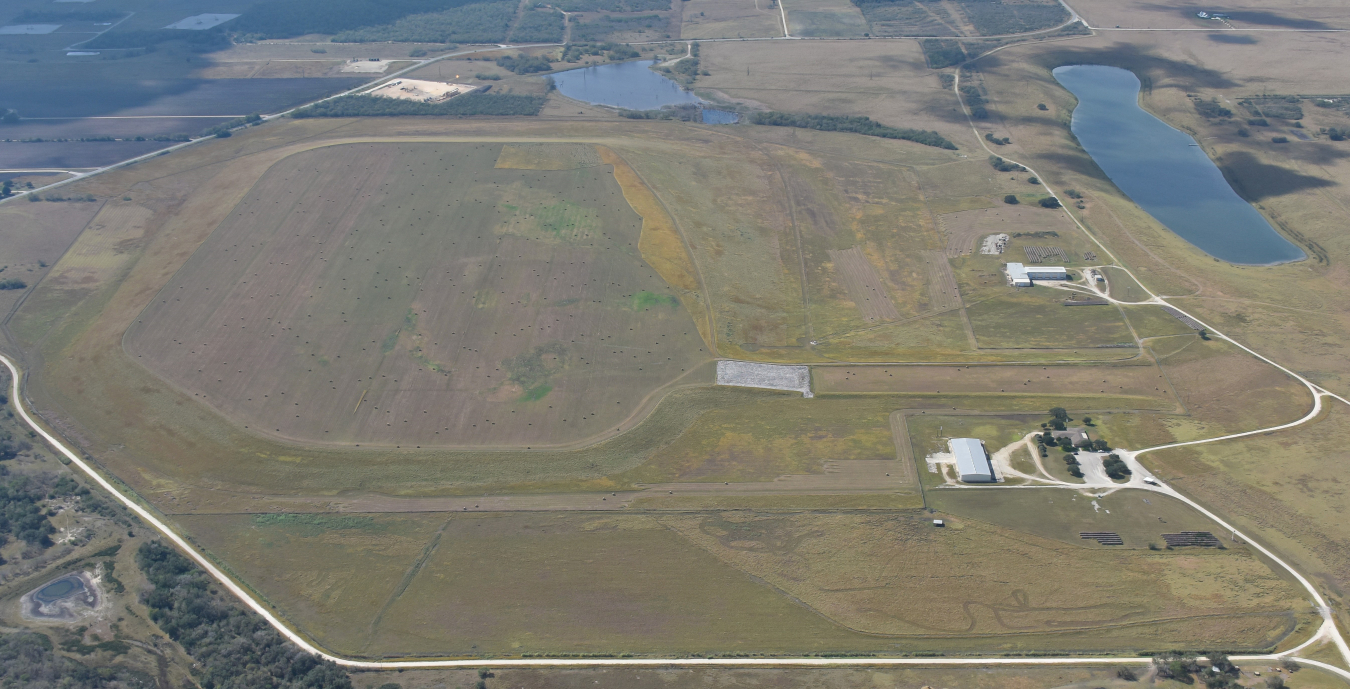In March 2018, U.S. DOE LM Director Carmelo Melendez joined other DOE staff on a tour of four former uranium mill sites in south Texas.
April 18, 2018
Director Melendez confers with LM’s Tashina Jasso during a visit to the Falls City, Texas, Disposal Site.
In March 2018, U.S. Department of Energy (DOE) Office of Legacy Management (LM) Director Carmelo Melendez joined other DOE staff on a tour of four former uranium mill sites in south Texas.
Accompanied by Tashina Jasso, LM Texas sites manager, and David Shafer, LM site operations director, Melendez visited Falls City, an LM site remediated under the Uranium Mill Tailings Radiation Control Act (UMTRCA) Title I program. The group also visited the Conquista, Ray Point, and Panna Maria sites, which are currently undergoing cleanup and regulatory closure. When remedial action is complete, these latter sites will transition from private ownership to LM under Title II of UMTRCA.
Each of these sites contains a disposal cell that encapsulates low-level radioactive material and debris from uranium milling operations.
At the Falls City site, which DOE remediated between 1992 and 1994, Melendez and the team got an overview of LM’s long-term surveillance and maintenance efforts. The group also took a close look at local land management practices such as haying, a historic land use in south Texas that is currently implemented at the site.
“At Falls City, haying provides the best reuse option for DOE,” Jasso said. “In exchange for the hay, the vegetation is maintained and we have a local point of contact who maintains our fences and signs and lets us know if there is a problem at the site.”
At the Conquista, Ray Point, and Panna Maria sites, Melendez and the team met with site licensees and their representatives to discuss operations, land-use issues, and health and safety protections.
In 2016, LM initiated a process to prepare for assuming perpetual responsibility for Title II reclaimed sites. As part of the process, LM conducts thorough evaluations of site conditions, which includes coordinating with regulators and licensees to ensure that site documentation is complete and remedies are protective and stable. The office collaborates closely with State of Texas regulators, the U.S. Nuclear Regulatory Commission, and the site licensees to reach solutions that are protective of public health and the environment.
At Panna Maria and Ray Point, Melendez and Shafer were briefed on the pre-transition work that LM has undertaken for these sites. The office began meeting regularly with the licensees and Texas Commission on Environmental Quality early in the regulatory closure process, allowing staff to identify potential challenges from the outset and collaborate on solutions.
The trip to Texas was part of a larger initiative by Melendez, who was appointed LM Director in December 2016, to familiarize himself with LM sites around the nation. In April, he plans to visit Defense-Related Uranium Mine sites in Colorado and Formerly Utilized Sites Remedial Action Program sites on the east coast. In June, he will tour UMTRCA sites in Wyoming.

The Panna Maria, Texas, Disposal Site. Approximately 6.8 million tons of uranium ore were processed at the former mill, which shut down in 1992. Site reclamation was complete in 2015.

